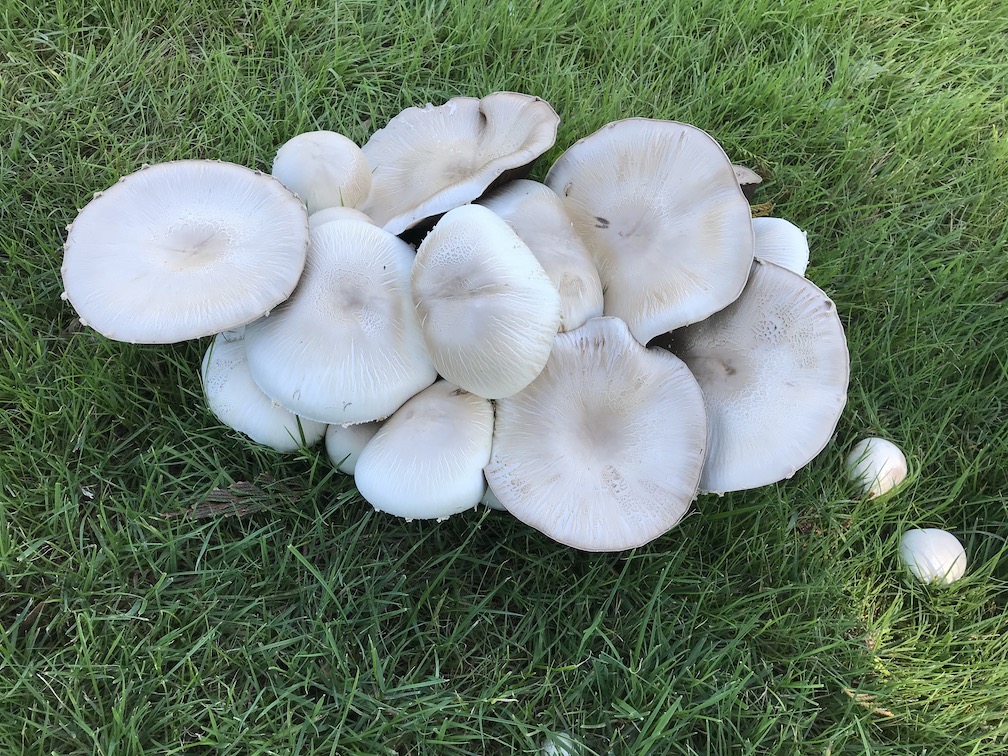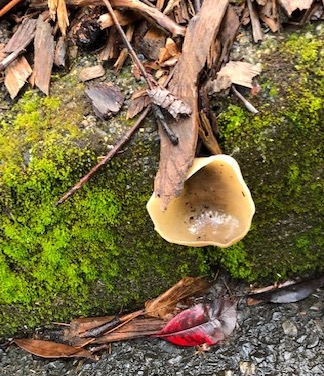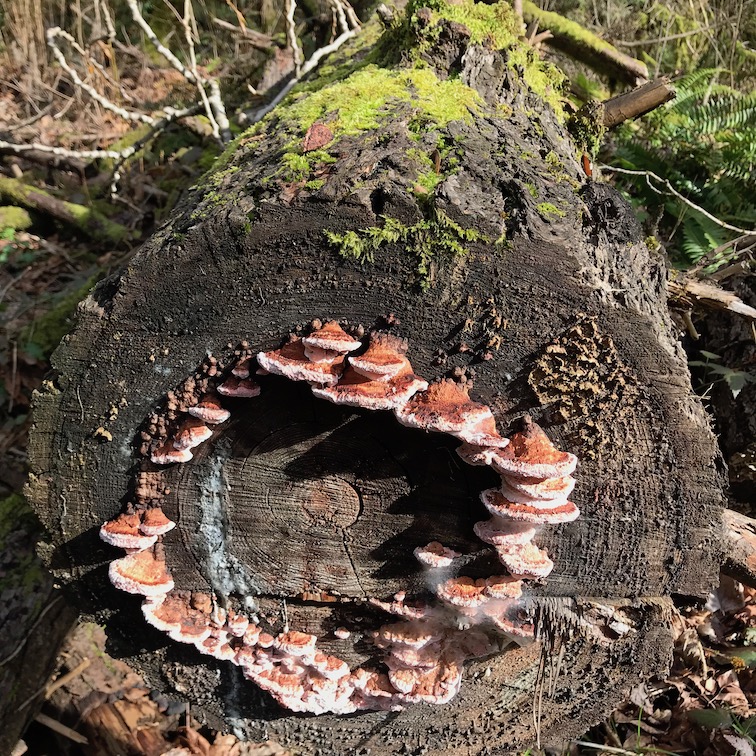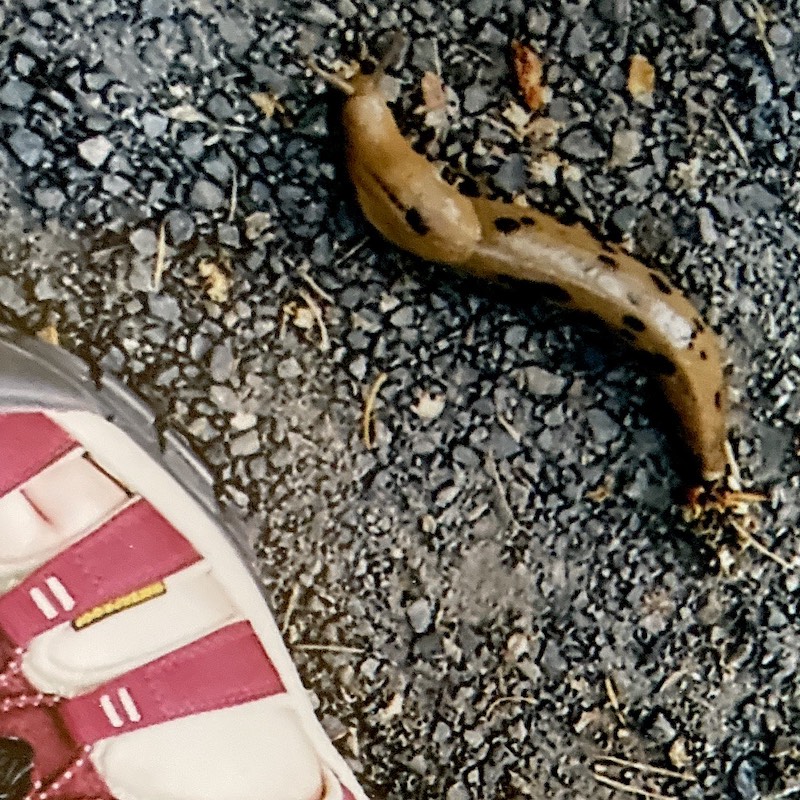The Magic Outside — Fungi, Lichen, and Slime Molds


RVNA and Greenwood Hills Cemetery are good hunting grounds for yellow brain, golden jelly fungus, yellow trembler, black and yellow witches’ butter, hair ice, jelly ear, leafy brain. Also the less spookily named Alpine Jelly Cone. For photos and more, see [LINK]

And there are the Lichens, layers of fungus and an alga living as one organism, both inhabiting the same body. Lungwort Lichen found (back in December 2019) in Greenwood Hills Cemetery was like brilliant green head of lettuce high in a bare tree. Lungwort Lichen, among others, is sensitive to airborne chemicals, so it is a great indicator of forest health and air quality. They will be found where air quality and forest health are good.
Over 580 species of macrolichens and over 1400 species of microlichens have been found in the Pacific Northwest. It seems as if lichens – Foliose (like specklebelly), fruticose (like old man’s beard and trumpet lichen) and crustose (bright yellow, orange, red, as well as grays and greens)-are ubiquitous in Collins View Neighborhood. They seem to colonize every shingle, twig, grave stone (except the metal monuments) and rock. [LICHEN LINK]
See this [photo gallery of lichens] and, you can visit Oregon State’s [LICHENLAND]!
Walk along. Scratch and sniff bark on different trees: Fragrant or odiferous? Vanilla scent? Pine scent? Or the “stink tree”? Back to the spooky thread, the odor of a spruce witches’-brooms is usually repulsive. As it should be. See [fragrant and odiferous trees]
Consider this log with fungi colonizing only one tree ring...

What was special about that particular year’s ring? Some delicious-to fungi treat deposited that year? Or maybe fungi spores were deposited only then, just waiting a chance to erupt when the tree was cut down?
Slime Molds are so cool. Slime mold colonies move! Dog Vomit Slime Molds can be found on piles of shredded bark. See photo of [Dog Vomit Slime Mold] on iNaturalist. (Scratch and sniff not suggested!) When food is in short supply, the single-celled slime mold organisms congregate, readily change shape and start moving as a single body (colony). They are also sensitive to airborne chemicals and can detect food sources. They feed on microorganisms that live in any type of dead plant material.
Slime molds are no longer considered part of the fungi kingdom. They are not Lichens. They belong to themselves (myxomycetes). Some intriguing names are Wolf's Milk, Honeycomb Coral Slime Mold, Chocolate Tube Slime, Carnival Candy Slime, Tapioca Slime, Scrambled-Egg Slime, and many more. Check this link out for great pictures to help you to identify and list what you find: [Slime-molds of the pacific northwest].
We started at the top of the trees with lichens and witches’ broom, moved down to scratch and sniff the bark, then to the stump fungi and down to piles of wood chips for slime molds.
Following that slime thread, now turn over some logs. Count (maybe measure?) those big banana slugs!

Thanks to Dave & Dixie Johnston for excellent suggestions on fun activities for forest walks.
Submitted by M. Read, January 2022. Please send comments to nature at NewCollinsView · blog. Thanks!
Here we may share comments sent in email and|or made on Nextdoor (with permission).